- Home
- Isaac Hooke
Forerunner Page 2
Forerunner Read online
Page 2
“Oh, we had an admiral,” Jain said. He felt a little disappointed that he wasn’t the one who was admiral. “Okay. So, there are at least five other vessels out there with us?”
“That’s right.”
“I didn’t see them on the external feed,” Jain said.
“Of course not,” Xander said. “The distances involved with anything space-related are immense. The other ships would appear like stars to your naked eye, if you could see them at all. But if you check your tactical map, you’ll discover precisely where they are located, at least in relation to you.”
“And how—” But Jain knew.
His eye defocused, and he accessed a HUD that overlaid the virtual environment. He pulled up the tactical map, which further obscured his digital surroundings.
He saw five blue dots surrounding a marker located at the center of the map. Nearby were spheres of different sizes and colors representing the different planets, an asteroid belt, and further off, at the system barycenter, two larger globes, one red, one blue, representing a binary star system.
There were labels above the different dots, including one above the marker at the center of the map. “Tacos. No… Talos.”
“That’s this ship,” Xander said. “The Talos. A Vindicator Class vessel.”
“Talos…” Jain said.
“Yes, another name chosen by you,” the man said.
“A giant automaton made of bronze,” Jain said. “From Greek mythology. He circled the island of Europa to protect it from pirates and invaders.” He glanced at Xander, somewhat confused. “Not sure how I knew that.”
“While the engram banks in your AI core were damaged,” Xander said. “The cloud servers aboard remain mostly intact. You have a vast database of human knowledge stored inside those cloud servers. Because of your link to them, that data is immediately accessible. It’s like directly accessing your own memory.”
“Talos,” Jain said, testing the name once more on his tongue. It did seem like a name he would choose.
“It’s strange,” Xander said. “You and the others all chose different names for your starships than your actual names, when in essence, the ships are each of you. It would be like assigning your human body a different name than your given name, for example.”
“Well, we’re not human anymore,” Jain said. “So no need to stick to human convention. It certainly feels damn odd, at least to me, having a ship for a body, so I’m sure you can understand why we’d give them different names. Even now, I don’t really consider the ship my body. This right here is more real to me.” He indicated his virtual form.
“I suppose so,” Xander said.
“So, you say we were attacked, and don’t know what did this to us…” Jain said.
“That’s right,” the bearded man replied.
“Any chance it might have been a natural phenomenon?” Jain pressed. “We passed too close to some kind of interplanetary storm, and got jolted by lightning?”
“No lightning I know of could have caused damage like this,” Xander said. “No, we were attacked. And whatever did the attacking is still lying in wait out there, somewhere. Either in this system, or one nearby.”
“So you have no idea, then?” Jain said.
“We are in deep space, far from any explored systems,” Xander told him. “It could be anything.” The robed man paused. “Still, I suppose there are few candidates. There is a conglomerate of alien beings humanity is familiar with, who run a galactic empire we know only as the Link.”
“You think we’ve met one of the member species in this empire?” Jain asked.
“Maybe,” Xander said. “But as far as I can tell, our path from Earth has taken us coreward, away from the systems under claim by that empire. However, it is well known that the empire is at war with some other space-faring race. The fact that the empire’s member species are constantly seeking new planets to terraform into bioweapon production factories attests to that fact. I believe it is possible we may have encountered the species the Link are at war with.”
“Well that’s not the best news,” Jain said.
“No,” Xander admitted. “And I could be wildly off the mark.”
“Well, something did this,” Jain said. “And it’s certainly not friendly. When will our repairs be finished? Or at least, when can the fleet get underway?”
“It will take one week before we can get all the other Mind Refurbs back online,” Xander said.
“So we’re essentially sitting ducks out here until our repairs are done,” Jain said.
“That’s right,” Xander said. “But I never said repairs would be done in one week, just that we would be able to get underway. Consider, you’ve already been floating out here for the past two months.”
“We’ve been out here for two months?” Jain asked. “Why didn’t you say so?”
“It hasn’t come up until now,” Xander replied. “I originally activated shortly after the battle ended. Or I believe so, based on the timestamps between my awakening and my last memories. I contacted the other autonomous subsystems of the other warships and began initiating repairs. I kept a constant vigil on the stars, but nothing ever came to assail us. Whatever did this is long gone.”
“At least until we start moving again,” Jain said. “Maybe they left sensors out here to track us. And as soon as we start up, they’ll come back to finish the job.”
“Maybe,” Xander said. “We can’t really know, can we?”
“No,” Jain said. “How come it took so long to activate me, if damage to my core was restricted to the engram regions?”
“Your AI core still had to be repaired to function properly,” Xander said. “As well as the fusion reactors necessary to power your mind, and the rest of the ship. Across the fleet, that has been the biggest time sink when it comes to repairs: I’ve had the drone swarms concentrating on the damage to the reactors first, and the engines second.”
“So, according to my database, most systems colonized by humanity are connected to the Interstel,” Jain said. The Interstel was a multi-system, delay-tolerant network that enabled queued communications and messaging between space colonies—essentially the galactic version of the Internet.
“Yes, but there are no Rift Gates present in the current system,” Xander said. “Let alone Interstel probes.”
“So, what you’re saying is we’re essentially cut off from communications with the rest of the galaxy?” Jain asked.
Xander nodded. “That is precisely what I’m saying.”
“Okay, well, that still leaves one very important question unanswered.” Jain materialized a blue, tight-fitting uniform over his body. He wasn’t sure how he did it, he just did. A captain’s uniform of some kind. Appropriate.
He released his now-clothed groin area and folded his arms across his chest. “Do you know our original mission? Why humanity sent us out here in the first place?”
“Unfortunately,” Xander said. “As I already told you, I remember the first few days after reaching this system, but nothing before or after.”
“There have to be some hints in those first few days,” Jain said. “An offhand comment spoken by myself or you. A virtual image. A digital document perused.”
“No,” Xander said. “There are no hints. I don’t know what our mission is. I don’t know why we are here.”
2
During that week, while Jain waited for the AI cores of the other Mind Refurbs to come online, he reacquainted himself with the different tasks involved in running a starship. Most of the operations were self-regulating, taken care of by various background processes and subroutines in his AI core, similar to a human being’s autonomic nervous system. The difference was that he could intervene in any of those systems to make changes and adjustments as he saw fit, but everything was already fine-tuned to handle the current state of the Talos, calibrated with the best possible settings, so there was no need to touch anything.
There were no life support systems o
f any kind. Why would there be? He carried no crew. The ship contained no living areas: most of the crawlspaces existed solely to give the repair drones access to the various decks. There were also no hydroponic and waste-disposal decks. The radiation grade of the hull armor was designed specifically to protect circuits from cosmic rays: if there were humans aboard, they would fry the instant the vessel left the protection of a magnetosphere.
According to his military database, most starships were like this. The cost of vessels simply became too expensive when human transportation was factored into the equation. It would have been impossible for humanity to develop a space navy if all of their ships had to carry organics.
There were a few privately-funded luxury companies that offered space cruises for rich humans, but that was the extent of it. In space, the robots ruled. At least when it came to human vessels.
Once he had a feel for the day-to-day operations of the ship, he reviewed his personnel file and officer evaluation reports to get a better idea of who he was, and to fill in the missing pieces he had in his memories. Conveniently, that data was available in his cloud storage, alongside a whole bunch of other military material, including the files of the other Mind Refurbs. After getting a good handle on his own background, he switched to perusing the files of the other members of his fleet. When he was satisfied that he had an idea of what to expect from them, he closed the files and moved on to the next item on his TODO list: the creation of a special VR bridge environment.
He wanted something a little more high-tech than the nighttime pool setting Xander had come up with. It took a few days, but when he was finished he had the perfect environment to anchor his consciousness in this new reality of being a starship captain. He considered creating different virtual characters to assume the various roles involved, such as communications and tactical officers, but there was no point. He was in direct control of everything and inserting unnecessary middle-men would only slow him down. A few extra milliseconds of delay could mean the difference between life and death in combat.
He was in that bridge environment now, seated in a lone chair with a small curving table in front of him. Its curvature matched that of the bulkheads around him. Various digital screens and floating indicators around him gave him insights into the current status of the different systems.
He glanced at the weapons and armor status screen, and it enlarged on his HUD. The statuses were divided into different sections from port to starboard; the armor rating listed below the weapons referred to the entire hull segment, not armor protecting the weapon in question.
Forward-facing:
“Barracuda” energy cannon, 45-degree throw angle. Operational.
Armor: one hundred percent.
Starboard-facing:
Sixteen “raptor” heavy laser turrets, 180-degree throw angle. Eight units damaged.
Armor: forty-five percent.
Port-facing:
Sixteen “raptor” heavy laser turrets, 180-degree throw angle. All units fully operational.
Armor: sixty-two percent.
Aft-facing:
Armor: one hundred percent.
Dorsal-facing:
Four “stinger” railguns, 90-degree throw angle. All units fully operational.
Three “hellraiser” smart missile launchers, 180-degree throw angle. One unit damaged.
Armor: eighty-three percent.
Ventral-facing;
Four “stinger” railguns, 90-degree throw angle. All units damaged.
Armor: ten percent.
The underside was the weak spot at the moment. If battle came before repairs were complete, he’d have to keep that area well away from the enemy. But otherwise, if there was one thing to be said about the ship, it was that it was certainly equipped for battle. The stingers were best used when enemies got close, but they could be also employed strategically as a long-range weapon, since the slugs they hurled were difficult to pick up until it was too late. The barracuda and the hellraisers were medium range, while the raptors were long range.
The vessel also contained several probes that could be deployed to set up a sensor grid throughout a system, or to act as repeaters for communications purposes. It also contained two transports that could be used to explore planets, or mine minerals from moons and asteroids.
Speaking of minerals, he pulled up his metals supply next. Everything was low, especially molybdenum and aluminum. During the week, Jain had kept a wary eye on those supplies: the inventory was already depleted from the past two months of repair work and would only continue to dwindle as the drone swarm made further overhauls.
As soon as the fleet was underway, the first stop would have to be a visit to an asteroid belt or moon to restock. The processed ore would be used to replenish the repair metals, while the slag produced in the refining process could be used to provide slugs for the railguns.
They would also need to find sources of frozen water and nitrogen at some point; the latter often collected in layers of annealed ice known as “glaze.” Extractors could separate the hydrogen and oxygen from the water into the propellant used for space flight, while the nitrogen was a key component to the warheads required by the hellraiser missiles.
“Clones are ready to bring online,” Xander announced, breaking Jain’s ruminations. The robed man materialized, standing next to him. His hood was lowered to reveal his bearded face.
“All right, well, give the orders to the appropriate subsystems,” Jain said.
Even though the AI cores of the other vessels were currently offline, Xander had the necessary rights to remotely command the subsystems of each ship. It was part of the repair protocol, which granted temporary access to other team members when offline. Once the Mind Refurbs were loaded and booted, the security measures would prevent further changes by Xander.
“It’s too bad you only have the original backups,” Jain said.
“Yes,” Xander said. “The other backups were stored in the same neural net as the AI cores. A bad decision on our part.”
“Hm, but my AI core survived intact,” Jain said. “Does that mean I have some working backups?”
“I checked, and there is a partial backup we could attempt to restore; however, it would overwrite everything that is currently you,” Xander said. “The you who is speaking with me now would cease to exist. If that is what you want, I can restore the backup and—”
“Actually no,” Jain said. “That’s all right. So what about the original backups then? Where are they stored?”
“The original backups had their own neural net allocated in the separate cloud storage space reserved for the vast database of human knowledge you have at your fingertips,” Xander answered.
“Why couldn’t we allocate more space in that vast database?” Jain asked.
“It doesn’t work that way,” Xander replied. “The neural net is a piece of custom hardware designed specifically for mind storage. The only other option was to store successive backups in the custom hardware area, overwriting the previous backups as we went along.”
“But you told me earlier that the admiral stored off-site backups of all of us,” Jain said.
“Yes, but he had a much bigger cloud storage center than the rest of you, with several neural network partitions meant to store backups,” Xander told him. “None of you have this.”
“All right, fine,” Jain said. “But couldn’t we have stored differential backups in that custom hardware, so we could roll back to different versions if we needed to? Rather than overwriting?”
“Again, not possible with the current hardware design,” Xander said.
“All right, well, going forward we’re going to overwrite the original backups then,” Jain said. “At least I will. I’ll leave the decision to overwrite up to the other individual Mind Refurbs.”
“Done,” Xander said. “All future backups will no longer be stored in your AI core, but will overwrite your existing backup in the cloud database.”
“
So, before you bring the others online, is there a way we can link up our VRs?” Jain said. “I’d like their first impressions of this reality to be here, with me.”
“I can do that,” Xander said. “Even though the bandwidth requirements for a shared VR environment are somewhat high, we’re well within range for near realtime communications. A couple of their avatars might experience some minor lag, but nothing appreciable.” The robed man beckoned toward the surrounding bridge. “You want them to appear here?”
“Why not?” Jain said. “It’s a reasonable facsimile of a starship bridge. Or at least how I always imagined one to be. Might as well get them used to a work environment that matches up with what they’ll be doing all day. We could tease them by bringing them to life aboard a yacht in the ocean, but somehow that doesn’t seem appropriate to me.” He leaned forward. “So then, let’s bring the others online, shall we? And if you can, try to make sure their avatars are clothed before they appear. Preferably in uniforms similar to mine.”
“I’ll see what I can do,” Xander said.
Five men and women appeared almost simultaneously in front of Jain, all dressed in fatigues like him. They glanced at each other in confusion, and then held up their arms to examine their uniforms.
“Hello everyone,” Jain said. “My name is Jain. I’m the captain of the Talos. You’re aboard my vessel. Or rather, a simulation of it. Congratulations, your minds were chosen to pilot starships.”
“But the briefing was only just yesterday,” a tall man stated.
“Briefing?” Jain asked.
“Yeah,” the man continued. “With Commander Weskin. We’d all gathered in the briefing room. A hundred of the top minds in the navy: scientists, engineers, snipers… officers and sailors from all ranks and ratings. The commander told us we’d be donating our minds to a good cause. That starships were being built: the beginnings of the first human space navy. Human minds were needed to pilot them, minds that would be scanned and injected into the neural networks at the heart of these ships. He said only a select few would be chosen to complete the mission. That it took a certain kind of mind to withstand the rigors of conversion to AI.”

 Warden 2
Warden 2 Devastator
Devastator Warden 4
Warden 4 Emperor
Emperor Mech
Mech Conqueror
Conqueror Fighter
Fighter The Forever Gate Ultimate Edition
The Forever Gate Ultimate Edition Defiler
Defiler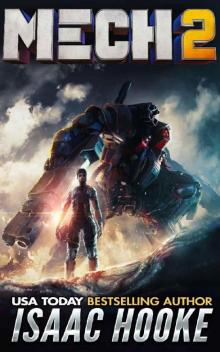 Mech 2
Mech 2 Warden 3
Warden 3 Warden 1
Warden 1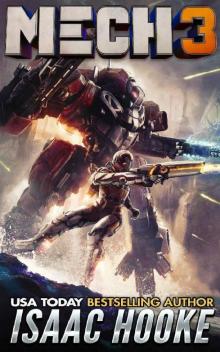 Mech 3
Mech 3 Forerunner
Forerunner The Alliance (AI Empire Book 2)
The Alliance (AI Empire Book 2) Breaker (Monster Tamer Book 1)
Breaker (Monster Tamer Book 1) Bender of Worlds
Bender of Worlds The Pendulum Swings (The Forever Gate Book 8)
The Pendulum Swings (The Forever Gate Book 8)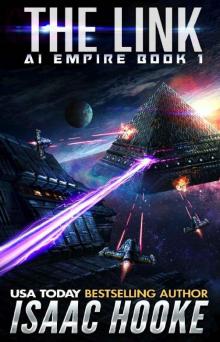 The Link
The Link Just Another Day
Just Another Day Star Warrior
Star Warrior Alien War Trilogy 1: Hoplite
Alien War Trilogy 1: Hoplite Battle Harem 3
Battle Harem 3 The Ethan Galaal Series: Books 1 - 3
The Ethan Galaal Series: Books 1 - 3 Reloaded
Reloaded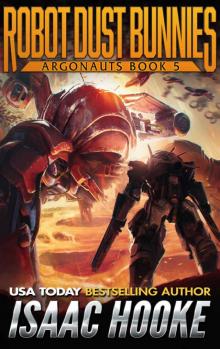 Robot Dust Bunnies (Argonauts Book 5)
Robot Dust Bunnies (Argonauts Book 5) Battle Harem
Battle Harem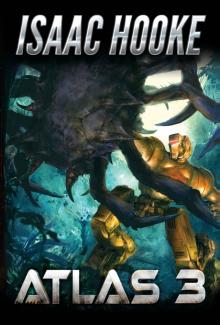 ATLAS 3 (ATLAS Series Book 3)
ATLAS 3 (ATLAS Series Book 3) Argonauts 2: You Are Prey
Argonauts 2: You Are Prey Worlds at War (A Captain's Crucible Book 5)
Worlds at War (A Captain's Crucible Book 5)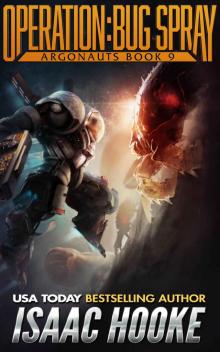 Operation: Bug Spray (Argonauts Book 9)
Operation: Bug Spray (Argonauts Book 9) Battle Harem 2
Battle Harem 2 Redeemed (Bolt Eaters Trilogy Book 3)
Redeemed (Bolt Eaters Trilogy Book 3)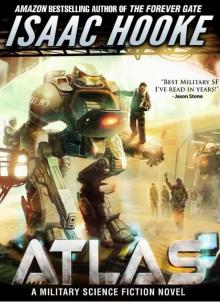 Atlas
Atlas Argonauts 1: Bug Hunt
Argonauts 1: Bug Hunt Reactivated (Bolt Eaters Trilogy Book 1)
Reactivated (Bolt Eaters Trilogy Book 1)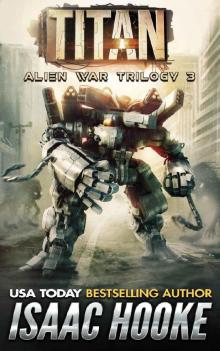 Alien War Trilogy 3: Titan
Alien War Trilogy 3: Titan Flagship (A Captain's Crucible #1)
Flagship (A Captain's Crucible #1)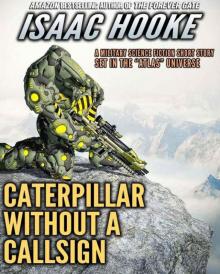 Caterpillar Without A Callsign
Caterpillar Without A Callsign The Forever Gate
The Forever Gate He Who Crosses Death (Star Warrior Quadrilogy Book 3)
He Who Crosses Death (Star Warrior Quadrilogy Book 3) Reforged (Bolt Eaters Trilogy Book 2)
Reforged (Bolt Eaters Trilogy Book 2) Refurbished
Refurbished Reloaded (AI Reborn Trilogy Book 2)
Reloaded (AI Reborn Trilogy Book 2) He Who Crosses Death
He Who Crosses Death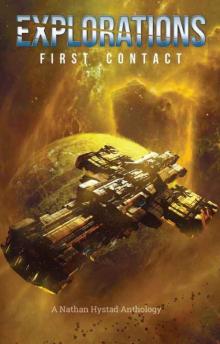 Explorations: First Contact
Explorations: First Contact Planet Killer (A Captain's Crucible Book 4)
Planet Killer (A Captain's Crucible Book 4) Quantum Predation (Argonauts Book 4)
Quantum Predation (Argonauts Book 4) Clandestine-IsaacHooke-FreeFollowup
Clandestine-IsaacHooke-FreeFollowup The Last Stand (The Forever Gate Book 9)
The Last Stand (The Forever Gate Book 9) City of Phants (Argonauts Book 6)
City of Phants (Argonauts Book 6)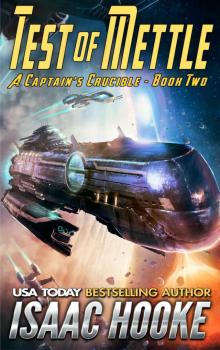 Test of Mettle (A Captain's Crucible Book 2)
Test of Mettle (A Captain's Crucible Book 2) Cradle of War (A Captain's Crucible Book 3)
Cradle of War (A Captain's Crucible Book 3) Rade's Fury (Argonauts Book 7)
Rade's Fury (Argonauts Book 7) Rebirth (The Forever Gate Book 6)
Rebirth (The Forever Gate Book 6) The Forever Gate Compendium Edition
The Forever Gate Compendium Edition Mechs vs. Dinosaurs (Argonauts Book 8)
Mechs vs. Dinosaurs (Argonauts Book 8) Alien War Trilogy 2: Zeus
Alien War Trilogy 2: Zeus ATLAS 2 (ATLAS Series Book 2)
ATLAS 2 (ATLAS Series Book 2)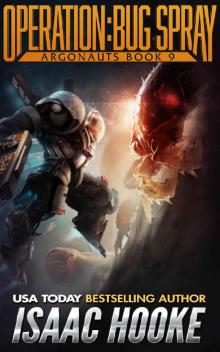 Operation_Bug Spray
Operation_Bug Spray